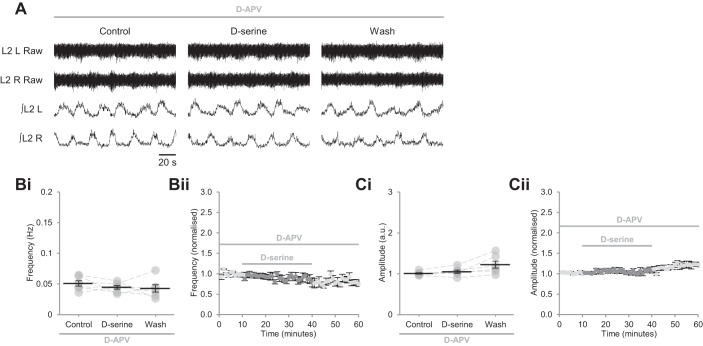Fig. 3.
Bath-applied d-serine acts at NMDARs to modulate fictive locomotion. A: raw (top) and rectified/integrated (bottom) traces recorded from the left and right L2 ventral roots (L2 L; L2 R) showing the effect of d-serine (10 µM) on locomotor-related activity in the presence of the competitive glutamate-binding site antagonist d-APV (50 µM). Bi: locomotor-burst frequency over 5 min during a control period, during a 30-min application of d-serine (1–10 µM), and during a 20-min washout. d-APV was present throughout; n = 6. Bii: time-course plot of normalized data aggregated into 1-min bins showing no change in burst frequency when d-serine is applied in the presence of d-APV. Ci: locomotor-burst amplitude over 5 min during a control period, during a 30-min application of d-serine (1–10 µM), and during a 20-min washout. d-APV was present throughout. Cii: time-course plot of normalized data aggregated into 1-min bins showing no change in burst amplitude when d-serine is applied in the presence of d-APV; n = 6. Error bars: ± SE.

